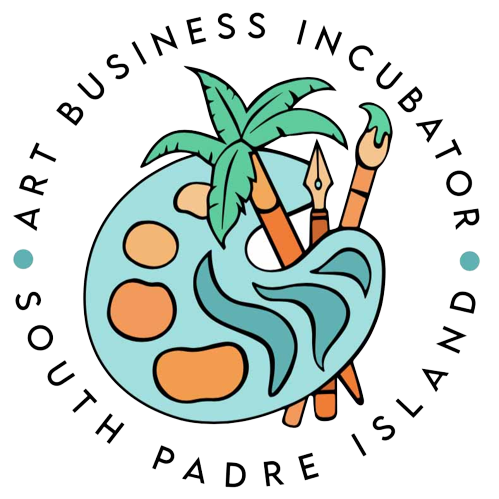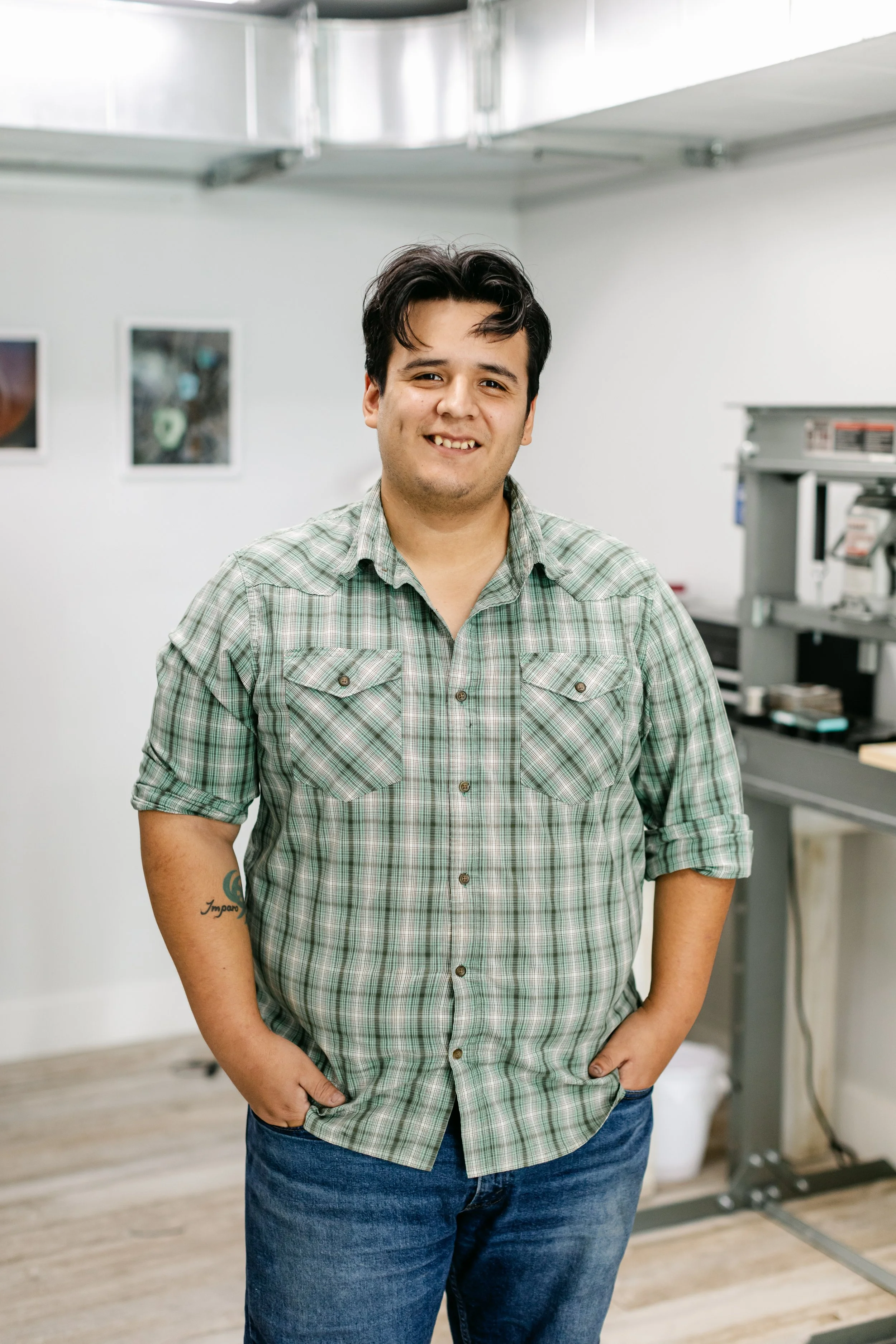Meet Our Current Gallery Artists
Karina M. Torres - class of 2025
Meet this young artist who has way too many pictures on her phone that she uses as painting references. Anything that catches Karina’s eye, whether color, lighting, or how an object is arranged, will be part of her reference folder.
Karina was born and raised in Brownsville, Texas, and has aspired to be an artist for most of her life. She has dabbled in many types of media, such as printmaking, watercolor, and graphic design but nothing has compared to her love for acrylic painting and digital illustration. Her art style is ever-changing and growing with all that inspires her. As an acrylic painter, Karina displays her love and admiration for the local environment and wildlife.
Karina believes that is is important for others to get invested in knowing about the world around them, which is often unnoticed. Knowing the different types of fauna and flora in the region that a person lives is a part of living in the moment. Having a favorite bird and recognizing its call, having a favorite flower, and knowing many of the native species of the Rio Grande Valley have inspired Karina’s artistic journey. With a background in graphic design, this artist has learned how to place her subjects in a striking manner. Her artwork demonstrates her regard for the beautiful moments in life, from landscapes and nature to the shadow of a tree on a cracked wall. Enjoying and romanticizing the smaller things in life has shaped her body of work into what it is today. Now, as a resident artist at the Art Business Incubator SPI, she will continue her mission of inspiring people to get invested in the natural world of this very unique region.
Follow Karina’s artistic journey on all social media platforms:
@kiwiestkarina
tor.karina10@gmail.com
Stacey Welchley - Class of 2025
Stacey Welchley is a South Padre Island–based artist with a passion for storytelling through reclaimed materials and ocean-inspired color. As a U.S. veteran and PMP certified project manager, Stacey brings discipline, humor, and heart to every creative endeavor.
Her current work combines layered resin techniques with unconventional canvases—like retired skimboards, surfboards, and swim fins—to capture the magic and fragility of marine life. By blending bold color with repurposed gear, Stacey’s pieces celebrate the intersection of adventure, art, and environmental awareness.
As part of the 2025 Art Business Incubator cohort, Stacey is developing a community-focused art business that invites others to explore creativity in hands-on, joy-filled ways. When she’s not elbow-deep in paint or resin, she’s teaching workshops, connecting with other creatives, or hunting down the next fin in need of a glow-up.
Follow Stacey at:
Instagram: @W3.ArtHaus
Web: https://StaceyWelchley.com
Email: Stacey_Welchley@yahoo.com
joel garza - class of 2024
Joel Garza, of Port Isabel, Texas, completed his first commissioned set of wedding bands for a couple in 2019, crafting textured silver into elegant rings to allow the couple to put their love on full display. In the process, Garza found something intriguing about something he made being worn by a couple every single day. That feeling was akin to an emotional high for the local artisan, fueling his mission to develop his skills and be recognized as the region’s most-driven jeweler and silversmith. Since, his jewelry has been welcomed into three prestigious art exhibitions on South Padre Island.
As his work comes more into public view, Garza recognizes parallels into his own life as a Dreamer from Matamoros, Mexico, who was raised in South Texas and Port Isabel but forced to keep a part of his identity hidden. As a child brought to the United States without citizenship, he faced potential deportation until becoming a DACA recipient as a teenager. Then, with legal protections, he could be open to others and pursue a future.
His jewelry allows others to fully express their identities through unique, custom works of art. His clients can have the same satisfaction of being seen that Garza himself enjoys. Further, as founder and chief jeweler of Seaside Gems, he works to bring metals and stones into a state worthy of not just being seen, but being showcased.
Today, Joel is a resident artists at the Art Business Incubator SPI, where he sells his creations and offers hands-on workshops to allow others to experience the joy of making jewelry.
Itzel Arlette Lopez - class of 2024
Itzel Arlette is a Mexican artist whose work spans oil, watercolor, and ink. Her artistic journey began in childhood, inspired by her grandmother’s love for painting. Growing up in a small agricultural town in Mexico, Itzel developed a deep connection with farm animals and nature, themes that remain central to her work today.
Over time, she transitioned to painting with oils, and watercolors. Itzel’s subjects often include animals, florals, and objects that capture her attention. Through her art, she aims to evoke peace in her viewers or stimulate their imagination, with titles that carry subtle meaning and depth.
With a background in chemistry, Itzel approaches her artwork with a spirit of experimentation. She is particularly drawn to the process of creating her own paints, foraging for pigments from wherever she ventures. She also enjoys stretching her own canvases to add to the feeling of building a painting from scratch and implementing subtle textures when priming them. This unique practice reflects her commitment to blending traditional techniques with an innovative, hands-on approach to materiality.
Itzel’s work invites viewers to pause, reflect, and connect with the beauty of nature, while also exploring the potential of art as a vehicle for thought and stimulating conversations.
Follow Itzel on Instagram @tornasollab
VIVIANA SANGUINO - class of 2023
My life can be told through summers.
When I was growing up, my mom had two friends and they each had two daughters, every summer we’d go to one of their houses at the beach and spend months there. I learned how to make flower crowns and bracelets with small red flowers that were all over their garden. I learned that I was great at guessing the song people sang underwater. (It was like a charades but with songs.) And I learned that I liked drawing, I spent the summer I turned twelve drawing the Pink Panther the best I could.
After that summer I returned to Mexico City, my home, where I drew on everything I could get my hands on, all of the printer paper, my notebooks—anything and everything. I even started a small art business in class, making and selling animal drawings.
The next summer, my mom took me for the first time to South Padre Island, and that was the summer where everything changed. My mom always believed the island to be a safe place, so I was free to take a bike and “travel the world,” which usually meant biking five or six blocks to the Paragraphs Book Store, buying two books and biking back to lie down next to the pool, everyday.
That was the summer I felt truly free, like I belonged. We would go to Tuesday Mornings and she would always buy me any art related thing I liked, any sketchbook, pencils, or any media, and that’s when I met the love of my life, watercolors.
I’ve heard people say watercolors are hard and they’re unforgiving. I’d say otherwise, and to be honest, I personally think watercolors are the easiest. To this day, I still feel like I’m cheating by creating artwork with watercolors and not other mediums. I think the way watercolors can’t really be controlled and your mistakes can’t be easily covered is what I like about it. I think it helped me realize you can’t really control everything, and things might move, or change, or dry in ways you never expected, but maybe that’s part of life.
I always thought I could never make a living out of art, so I studied graphic design. I thought it was a way to be creative and not starve. Yet in the end, design wasn’t enough for me, and other artists persuaded me to apply to the incubator—and here I am.





